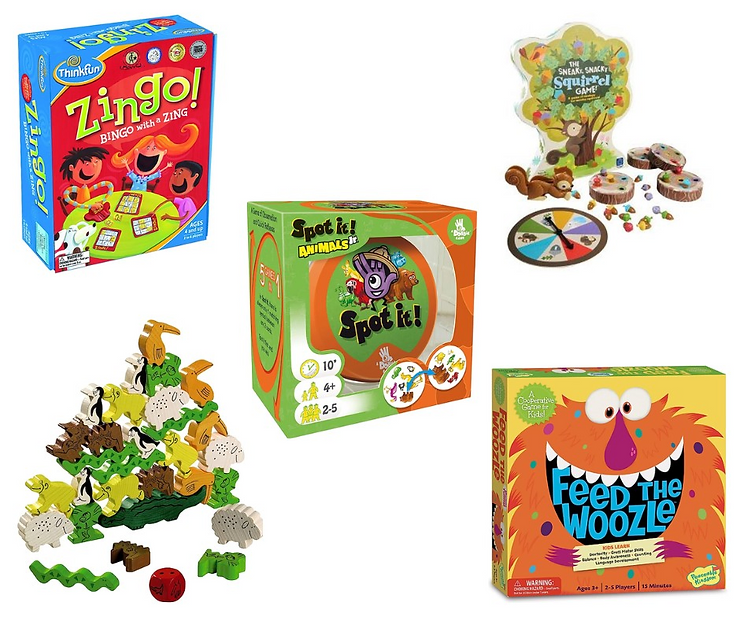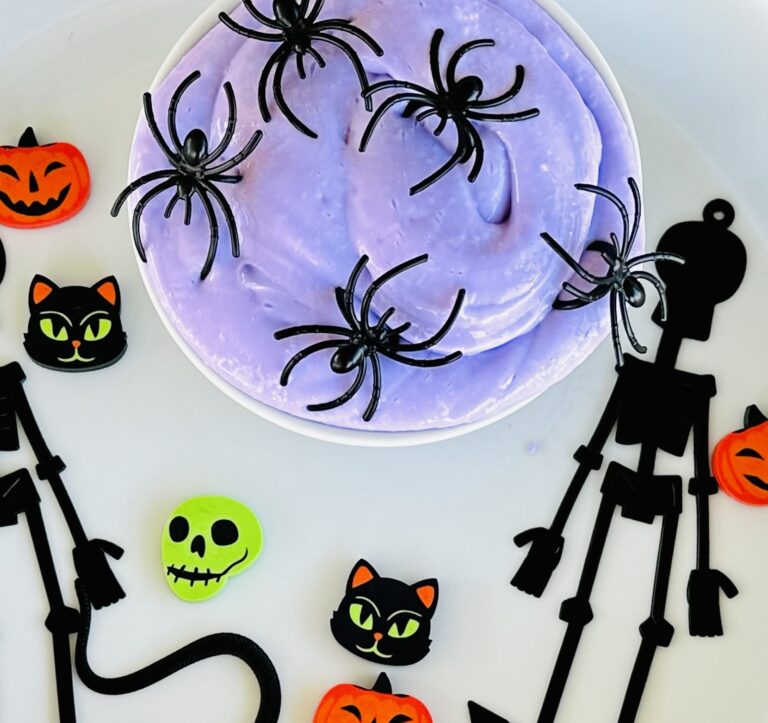The Best Board Games for Occupational Therapy

This post may contain affiliate links and I could earn a small commission at no cost to you. However, I will never recommend anything that I do not believe in or use myself. You can read more about my disclosure policy here.
Occupational therapy opened up a whole new world of colorful possibilities for my child, igniting his imagination through the magic of play therapy. It was truly fantastic, with a plethora of fun games and activities that effortlessly kept his attention locked in.
The joy he found in learning during these sessions was like nothing we had seen before. Occupational therapy quickly became his absolute favorite, and it’s no surprise – he had an absolute blast while growing and learning.
The remarkable progress he made throughout this therapy journey was nothing short of amazing!
But the growth doesn’t have to stop at therapy sessions alone. As parents, we can play a crucial role in fostering our child’s development by engaging in various activities at home. And here’s a fascinating fact: there are certain board games with occupational therapy benefits for children!
Beyond being a popular pastime, these games can work wonders in enhancing fine motor skills, hand-eye coordination, cognitive abilities, and social skills. So, while your little ones have a blast playing, they’re also engaging in a powerful form of therapy that promotes their overall development.
It’s a win-win for everyone involved!
To make things even better, I’ve compiled a list of 10 fantastic board games that not only captivate young children but also provide occupational therapy advantages. Get ready to have some fun while nurturing your child’s growth!
What is Occupational Therapy?
Occupational therapy is an invaluable intervention for individuals, including autistic children.
It focuses on supporting their development, enhancing their skills, and promoting overall well-being.
For young children, occupational therapy interventions are tailored to address their unique challenges and strengths.
It encompasses a holistic approach, considering various aspects of development, such as sensory processing, fine motor skills, social interaction, self-regulation, and play skills.
What is Play Therapy?
Play therapy, a prominent approach within occupational therapy, recognizes the significance of play in a child’s development as a means for self-expression, skill development, and understanding their surroundings.
It recognizes play as an essential part of a child’s development, allowing them to express themselves, develop skills, and make sense of the world around them.
In the context of occupational therapy for autistic children, play therapy provides a structured and supportive environment where children can engage in purposeful play activities to work on specific goals.
Related: The Best Home Activities for Occupational Therapy
10 Super Fun Board Games with Occupational Therapy Benefits
Lets check out our list of 10 fantastic board games that provide occupational therapy benefits for kids.
1. Zingo
An entertaining and engaging game! Each player receives a Zingo card with various pictures on it. The Zinger, a device similar to a dispenser, is loaded with tiles that also have corresponding pictures. When the game starts, players must quickly scan their Zingo cards and try to match the pictures on the tiles dispensed by the Zinger. The first player to complete a row on their card by collecting the correct tiles calls out “Zingo!” and wins the round.
Zingo offers occupational therapy benefits for young children by enhancing visual perception, fine motor skills, and social interaction. The game requires visual scanning and identification of matching pictures, improving attention and discrimination. Manipulating small tiles promotes hand-eye coordination and precision, while turn-taking and social engagement foster communication skills. The fast-paced nature of the game also encourages attention and focus. Zingo provides an enjoyable and effective way for young children to develop visual perception, fine motor skills, and social interaction abilities.
2. Feed The Woozle
Feed the Woozle is an entertaining and hilarious game! The goal of the game is to feed the hungry Woozle a variety of silly snacks by rolling a dice and following the instructions on the snack cards. Players work together to complete different challenges, such as making funny faces while feeding the Woozle or hopping on one foot. The game encourages creativity and movement while fostering cooperation among players. The objective is to feed the Woozle before all the snacks run out, making it a thrilling and engaging experience for young children.
Feed the Woozle provides occupational therapy benefits for young children by promoting gross motor skills and social interaction. Participating in various movement activities like hopping, balancing, and making funny faces enhances coordination, balance, and gross motor control. Additionally, the cooperative nature of the game encourages communication, teamwork, and turn-taking skills as players work together to feed the Woozle. Moreover, the game stimulates creativity and imagination during imaginative play with silly snacks. Overall, Feed the Woozle is an excellent choice for occupational therapy, combining gross motor skills and social interaction in a fun and engaging way for young children.
3. Hi Ho! Cherry-O
A delightful and engaging game! The objective of the game is simple: players take turns spinning the spinner and then pick cherries from their tree and place them in their bucket. The first player to fill their bucket with all ten cherries wins the game. It’s a fun and interactive way to introduce young children to counting and basic math skills.
Hi Ho! Cherry-O offers occupational therapy benefits for young children by promoting fine motor skills and numeracy. The game enhances hand-eye coordination, finger strength, and dexterity as children pick and place cherries. It also supports number recognition, counting, and basic math concepts through the use of the spinner and adjusting the cherry count in their bucket. Additionally, the game fosters turn-taking, sharing, and social interaction, promoting communication and social skills development. Overall, Hi Ho! Cherry-O is an excellent choice for young children, combining motor skills, numeracy, and social engagement.
4. The Sneaky, Snacky Squirrel Game
An entertaining and engaging game! The objective of the game is for players to help their squirrels collect acorns of specific colors using squirrel shaped tweezers. Each player takes turns spinning the spinner and must use the tweezers to carefully pick up the corresponding colored acorn and place it in their log. The first player to fill their log with acorns wins the game. It’s a fun and interactive way for young children to practice fine motor skills, color recognition, and turn-taking.
The Sneaky, Snacky Squirrel Game provides occupational therapy benefits for young children. It develops fine motor skills through the use of squirrel shaped tweezers to pick up and manipulate small acorns, enhancing hand-eye coordination and finger strength. The game also promotes color recognition as players match acorn colors with the spinner’s result, improving visual perception and discrimination. Additionally, the game encourages turn-taking and social interaction, fostering communication, patience, and social skills development. Overall, The Sneaky, Snacky Squirrel Game is an enjoyable and beneficial choice for occupational therapy with young autistic children, combining motor skills, color recognition, and social engagement.
5. Pop the Pig
An exciting and interactive game! The goal of the game is to feed the hungry pig by taking turns to roll the dice and press down on its head the number of times indicated. Each time the pig is pressed down, its belly expands until it eventually pops open, revealing the eaten hamburgers. The player who caused the pig to pop is the winner. It’s a simple yet suspenseful game that combines anticipation, counting, and motor skills.
Pop the Pig offers occupational therapy benefits for young autistic children by promoting fine motor skills and numeracy. Pressing down on the pig’s head improves finger dexterity and motor control. The game incorporates counting and number recognition as players determine the number of presses based on the rolled dice, supporting numeracy skills and cognitive development. Additionally, Pop the Pig enhances turn-taking and social interaction, fostering communication, patience, and social skills development. Overall, it provides an enjoyable and beneficial experience that combines fine motor skills, numeracy, and social engagement for young children.
6. Spot It! Jr. Animals
An engaging and fast-paced game! The game consists of circular cards with various animal pictures. Each card has only one matching animal picture with any other card in the deck. Players simultaneously flip over their cards and try to spot the matching animals between their card and the center card. The player who finds the matching animal first calls it out and collects the cards. The game continues until all the cards have been collected, and the player with the most cards wins. It’s a visually stimulating and entertaining game that promotes observation, attention, and quick thinking.
Spot It! Jr. Animals offers occupational therapy benefits for young children by enhancing visual perception and cognitive skills. Players rapidly scan and identify matching animal pictures, improving visual attention, discrimination, and processing abilities. The game also promotes turn-taking and social interaction, fostering communication, patience, and social skills development. Overall, Spot It! Jr. Animals is an enjoyable and valuable game that combines visual perception, cognitive skills, and social engagement for young children.
7. Sequence for Kids
A fun and engaging game! The objective of the game is to be the first player to get a sequence of four chips in a row on the game board. Each player takes turns playing a card and placing one of their chips on the corresponding animal picture on the game board. The game combines strategy and matching skills, requiring players to plan their moves and think strategically to form their sequences.
Sequence for Kids provides occupational therapy benefits for young children. The game enhances cognitive skills such as pattern recognition and strategic thinking as players identify matching animal pictures and plan their moves. It also supports fine motor skills through the manipulation and placement of chips on the game board, improving hand-eye coordination and precision. Additionally, Sequence for Kids encourages turn-taking and social interaction, fostering communication, patience, and social skills development. Overall, the game combines cognitive skills, fine motor skills, and social engagement, making it an excellent choice for young children.
8. Froggy Feeding Fun
Froggy Feeding Fun Activity Set is an engaging and interactive game! The game includes a friendly frog and colorful flies. Players take turns rolling both dice to see how many and what color flies the frog has to capture. The child must squeeze the frog’s mouth open wide enough to grab the flies. Then the same action is required to spit them out. It’s a fun and entertaining way for young children to reinforce numbers, counting, and color recognition while strengthening fingers and hands.
The Froggy Feeding Fun Activity Set offers occupational therapy benefits for young children. The game promotes fine motor skills development as children squeeze the frog’s mouth to capture and release flies, improving finger strength, dexterity, and hand-eye coordination. Additionally, Froggy Feeding Fun provides sensory integration benefits through tactile sensations, potentially helping children self-regulate and focus. The game also supports cognitive skills development by reinforcing cause-and-effect relationships and encouraging turn-taking, fostering patience and social interaction skills. Overall, it’s an engaging and beneficial therapeutic tool for young children.
9. Animal Upon Animal
Animal Upon Animal is a delightful and interactive game! The objective of the game is to stack wooden animal pieces on top of each other without causing the tower to collapse. Each player takes turns rolling a die and then carefully adding their animal piece to the stack. The player who successfully places all their animals on the stack without it toppling over wins the game. It’s a fun and challenging game that requires fine motor skills, hand-eye coordination, and concentration.
Animal Upon Animal provides occupational therapy benefits for young autistic children by promoting fine motor skills and spatial awareness. Delicately stacking wooden animal pieces enhances hand-eye coordination, precision, and finger dexterity. The game encourages spatial awareness and balance as players strategically position the animal pieces, improving visual perception, spatial reasoning, and coordination. Additionally, Animal Upon Animal fosters turn-taking and social interaction, promoting communication, patience, and social skills development. Overall, it combines fine motor skills, spatial awareness, and social engagement, making it an excellent choice for occupational therapy.
10. Giggle Wiggle
A fun and lively game! The goal of the game is to be the first player to place all of their colored balls on Giggle Wiggle’s moving arms. Players take turns placing their balls, one by one, onto the arms as they rotate and wiggle. The challenge lies in coordinating hand movements to carefully time the placement of the balls. The player who successfully places all their balls first wins the game. It’s an entertaining and engaging game that requires fine motor skills, hand-eye coordination, and concentration.
Giggle Wiggle provides occupational therapy benefits for young children by promoting fine motor skills and visual perception. Placing balls onto Giggle Wiggle’s moving arms enhances hand-eye coordination, precision, and finger dexterity. The game encourages visual tracking and attention as players coordinate their hand movements with the moving arms, improving visual perception, tracking skills, and concentration. Additionally, Giggle Wiggle fosters turn-taking and social interaction, promoting communication, patience, and social skills development. Overall, it combines fine motor skills, visual perception, and social engagement, making it an excellent choice for occupational therapy.
Related: Ultimate Toy Guide: 30 Best Sensory Toys for Autistic Children
Final Thoughts
These board games with occupational therapy benefits provide a range of benefits for young children. They support cognitive development, fine motor skills, visual perception, turn-taking, and social skills.
Through engaging in these games, children have the opportunity to practice important skills in a fun and interactive way, helping them to build confidence, improve concentration, and develop essential foundational abilities for daily tasks and academic success.
Board games with occupational therapy benefits can be a valuable tool, engaging young children while promoting their cognitive, motor, and social development. By incorporating these games into therapy sessions or family playtime, children can have fun while achieving important developmental milestones.
Recommended
- The Best Home Activities for Occupational Therapy
- Why Sensory Play Is Important For Child Development
- 25 Ways Life Looks Different Parenting an Autistic Child
- Embracing the Journey: Mourning and Healing After a Child is Diagnosed with Autism






